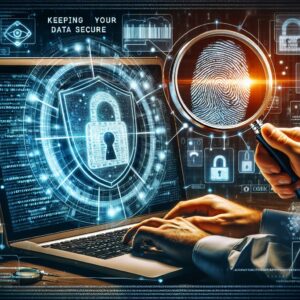With the increasing reliance on digital technology in today’s world, ensuring cyber security has become more important than ever. From sensitive financial information to personal data, the need to protect our digital assets from cyber attacks is paramount. This is where computer forensics plays a crucial role in identifying, analyzing, and mitigating security breaches.
Introduction to Cyber Security
Cyber security is the practice of protecting computer systems, networks, and data from cyber threats. These threats can take many forms, including malware, phishing attacks, and hacking attempts. With the rise of internet-connected devices and cloud computing, the attack surface has expanded, making it more challenging to defend against cyber attacks.
What is Computer Forensics?
Computer forensics is the application of investigative techniques to gather and analyze digital evidence in order to uncover the source of a cyber attack and identify the perpetrator. This involves using specialized tools and methodologies to investigate cyber security incidents, such as data breaches, network intrusions, and malware infections.
The Role of Computer Forensics in Cyber Security
Computer forensics plays a crucial role in cyber security by providing organizations with the tools and techniques needed to investigate and respond to security incidents. By conducting a thorough analysis of digital evidence, forensic experts can determine the cause of a cyber attack, identify the vulnerabilities that were exploited, and recommend measures to prevent future incidents.
Key Components of Computer Forensics
There are several key components of computer forensics that are essential for investigating cyber security incidents:
-
Evidence Collection: This involves capturing and preserving digital evidence in a forensically sound manner to ensure its integrity and authenticity.
-
Analysis: Once the evidence is collected, forensic experts analyze it to reconstruct the sequence of events leading up to the cyber attack and identify the techniques used by the attacker.
-
Reporting: A detailed report is prepared documenting the findings of the investigation, including the vulnerabilities that were exploited and the recommendations for improving security.
Best Practices for Cyber Security and Computer Forensics
To ensure robust cyber security and effective computer forensics, organizations should follow best practices, including:
-
Regularly update security software: Keeping security software up to date helps protect against the latest cyber threats.
-
Implement access controls: Limiting access to sensitive data and systems can help prevent unauthorized access.
-
Encrypt sensitive data: Encrypting sensitive data can protect it from unauthorized access in the event of a security breach.
-
Train employees: Educating employees about cyber security best practices can help prevent human error that could lead to a security breach.
Conclusion
In today’s digital age, cyber security and computer forensics are essential components of any organization’s security strategy. By implementing best practices and leveraging the tools and techniques of computer forensics, organizations can protect their digital assets from cyber threats and respond effectively to security incidents. As cyber attacks continue to evolve, staying ahead of the curve with robust cyber security measures and effective computer forensics is key to safeguarding against potential threats.




